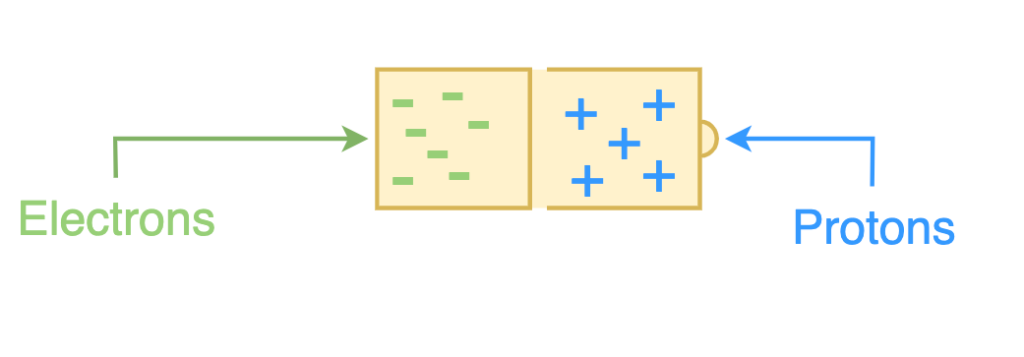Introduction #
To understand the basics of electronics and circuits it would be useful to step back and have a look at the basic elements of electricity and what electric current is.
The Atom #
Atoms consist of Neutrons, Protons and Electrons. The Protons and the Neutrons are bind together in the centre of the atom. Together, they make the Nucleus. The Electrons are floating free around the Nucleus.

The battery #
To make it simple understand what is electric current and why how it is working, we will introduce the role of the battery in this mechanism.
Batteries are using chemicals in order to separate electrons from protons. We will understand later how it is useful from electric current later on.

Electric Current #
Electrons are “jumping” from one nucleus to another in one direction, is called Electric Current. But Electrons need a push in order to start moving. If we have electrons in the one side of a coper wire, the new electrons entering the wire will move the the side with the other electrons. This is where battery coms to play.
Since battery is separating protons in one side and electrons in the opposite side, the side with the electrons will push the electrons entering the circuit, making them travel in one direction (current).

The unit for measuring electric current is called Ampere (A).
The faster the electrons are moving from Nucleus to Nucleus, the more electrical energy they can carry (Conductor materials like coper).
Ohm’s Law #
We discussed that the faster the electrons are moving in the conducting wire, that higher amount of electric energy they transfer.
Since each electric component (LED light, electric motor, sensors and many more) is rater to accept a specific amount of current (Amp’s), we need to control the current through the circuit by increasing or reducing the amount of it.
This is where a very useful electric component comes to play. The resistor.

In electronic circuits, resistors are used to reduce current flow, by using different levels of conductor materials.
In the next circuit, the recommended maximum of the LED is 20.0 mA, while the current is 61.9 mA. To reduce the current we need to use a resistor. Resisters comes with various resistance measures, and the Unit to measure resistance is called Ohm (Ω).

In order calculate the resistance the the circuit needs in order to achieve the maximum of 20.0 mA current, we will use the Ohm’s Law.
V = I * R
Ohm’s law states that the current through a conductor between two points is directly proportional to the voltage across the two points.

That means, in order to find the resistance we need in order to get the desired current in our circuit, we need to use the following formula:
R = V / I
- Determine the voltage (1.8 – 3.3) and current (~20mA) needed for your LED.
- We’ll use the following formula to determine the resistor value: Resistor = (Battery Voltage – LED voltage) / desired LED current. In our case battery voltage equals the desired LED voltage, so the value is 3.
In our case, Voltage equals to 3 V. Current equals to 61.9 mA = 0.0619 A (1mA = 1000A). So the formula is, R = 3 / 0.0619 = 48,5Ω.

If for example, we had 5V instead of 3, the formula would be (5-3.3)/0.0619=~31 ohms.
For multiple LEDs in parallel we need to sum the current values. From the example above, if we use 3 white LEDs the current requirement is 20mA x 3 = 60mA. The formula is, (5-3.3)/0.0619=~27 ohms.
To calculate a resistor based on the color bands, you can use this website, or you can use the manual color code sheet:

/*54745756836*/




